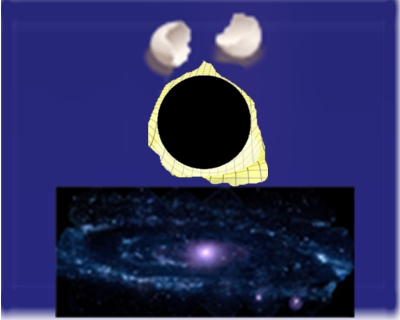Early, early, early, early black holes

I wrote this article sitting in a cafe, drinking good decaf latte from a light green mug and listening to unknown ambiental music.
– Who came first, the galaxy or the black hole?
– Is the evolution of black holes linked with the one of its host galaxy from the beginning?
– How many massive or super-massive black holes formed in the early Universe?
This are only a few of the questions discussed by a new article published by Treister, E. et al, Nature, 474, 356-358 (2011).
Even with their fancy, very expensive cameras pointed to the sky, scientists are not able to see much of the distant, early Universe. Even worse, regarding the black holes, they are surrounded by obscuring medium that traps most of the light, from visible to ultra-violet and X-ray, coming from their energetic growing process.
Entering the scientist’s tricks now:
First they discovered a large difference between the fluxes in soft and hard X-rays coming from a selected part of the distant Universe. If we assume that this light in X-ray comes from accretion of material onto the central black hole this means that we can find the density of the medium that is blocking the soft X-rays. Also from the flux in X-ray they estimated the number of the massive and super-massive black holes between 0.7 – 1 billion years after the Big Bang.
So how many there are?
Well, it depends on the model, but it can be as many as 3 millions in the most optimistic one. Also because they look at a small portion of the sky this number could change because the Universe is not homogenous.
Second trick is to find the best fit of the observed data with models in which the feeding and grow process of the black hole is linked with the evolution of the galaxy and with other models in which we have arbitrary processes.
The conclusion: we have a hand in hand evolution from the beginning of the Universe.
Now regarding the first question …….. we still do not know 

Recent Comments